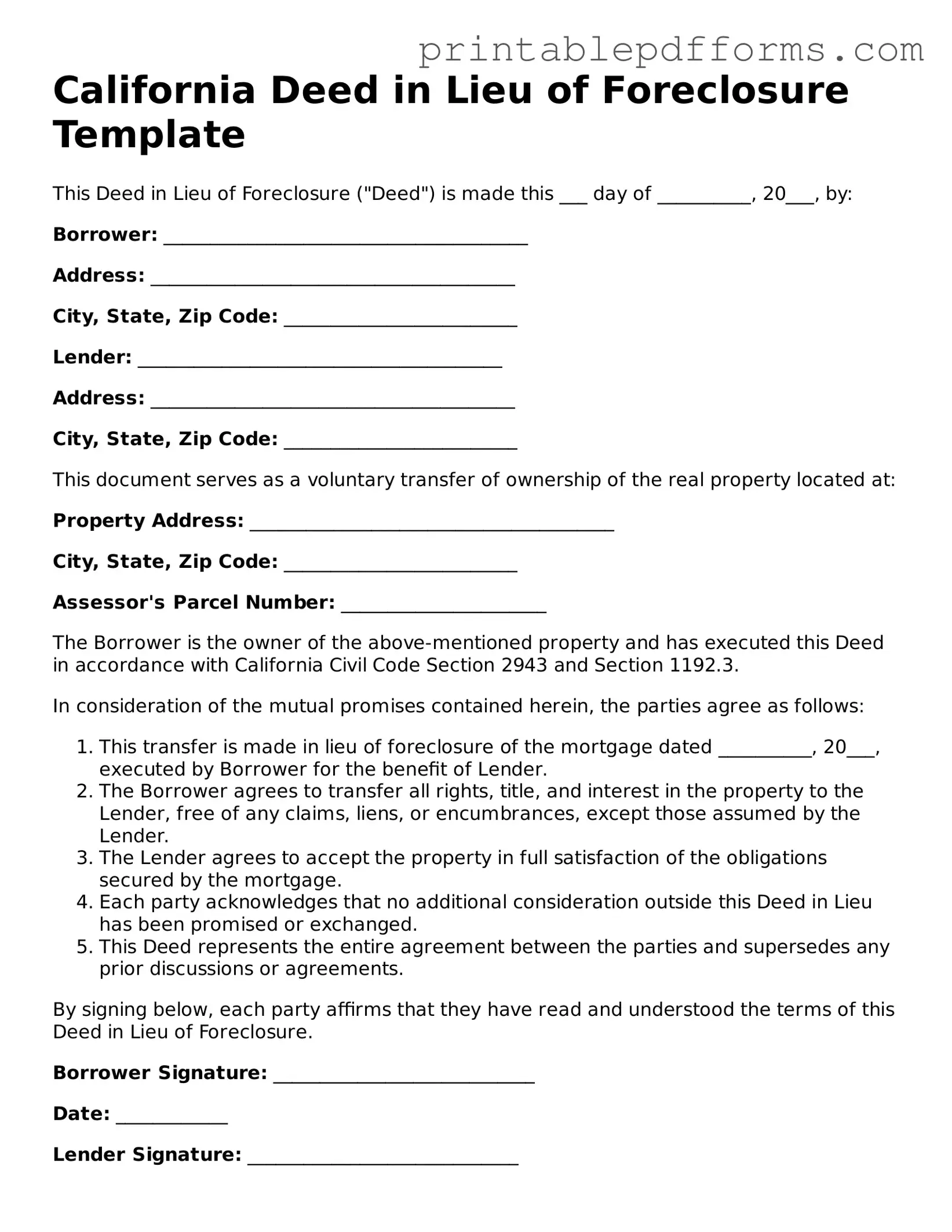California Deed in Lieu of Foreclosure Template
This Deed in Lieu of Foreclosure ("Deed") is made this ___ day of __________, 20___, by:
Borrower: _______________________________________
Address: _______________________________________
City, State, Zip Code: _________________________
Lender: _______________________________________
Address: _______________________________________
City, State, Zip Code: _________________________
This document serves as a voluntary transfer of ownership of the real property located at:
Property Address: _______________________________________
City, State, Zip Code: _________________________
Assessor's Parcel Number: ______________________
The Borrower is the owner of the above-mentioned property and has executed this Deed in accordance with California Civil Code Section 2943 and Section 1192.3.
In consideration of the mutual promises contained herein, the parties agree as follows:
- This transfer is made in lieu of foreclosure of the mortgage dated __________, 20___, executed by Borrower for the benefit of Lender.
- The Borrower agrees to transfer all rights, title, and interest in the property to the Lender, free of any claims, liens, or encumbrances, except those assumed by the Lender.
- The Lender agrees to accept the property in full satisfaction of the obligations secured by the mortgage.
- Each party acknowledges that no additional consideration outside this Deed in Lieu has been promised or exchanged.
- This Deed represents the entire agreement between the parties and supersedes any prior discussions or agreements.
By signing below, each party affirms that they have read and understood the terms of this Deed in Lieu of Foreclosure.
Borrower Signature: ____________________________
Date: ____________
Lender Signature: _____________________________
Date: ____________
This Deed shall be recorded in the County Recorder's Office of ______________ County, California.
